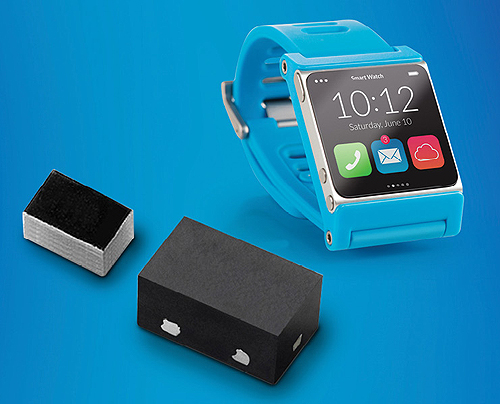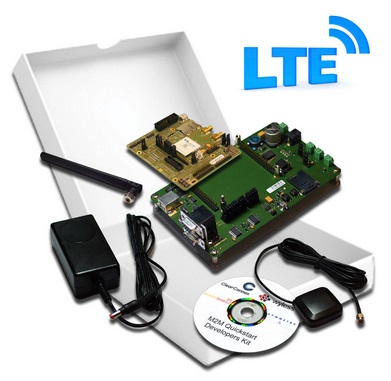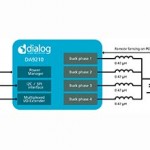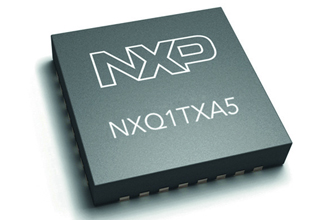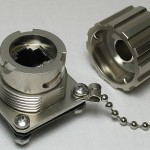by JAMES COLBY, Littelfuse Circuit protection technologies and board layout strategies help promote safety, reliability and connectivity. There’s one down-side to wearable technology that is unlikely to show up in headlines about the IoT: Human bodies generate static electricity as they move. That static electricity can potentially harm the sensitive electronics that power IoT applications. […]
Wireless
Cellular device kits for M2M designs from Symmetry Electronics
Symmetry Electronics has made starting a Cellular M2M Design very easy with custom Cellular IN-A-BOX kits based on Telit M2M modules. The various cellular technologies supported include: LTE, 3G, HSPA+, GSM, CDMA, 1xRTT, EVDO, and GPS tracking capabilities. The Telit Cellular M2M development kits are designed to start the evaluation of a cellular module and […]
Dialog Semiconductor extends power management leadership in China
DA9210 sub-PMIC powers MediaTek MT6795 processor in HTC One M9+ and E9+ Android based smartphones Dialog Semiconductor plc (FWB:DLG), a provider of highly integrated power management, AC/DC power conversion, solid state lighting (SSL) and Bluetooth® Smart wireless technology, announced that its DA9210 IC (sub-PMIC) will deliver precision power management to the MediaTek processor in HTC’s […]
Ultra Low Component Count, 5 volt Qi Low Power Wireless Charging Transmitter Reference Design
NXP Semiconductors N.V. (NASDAQ: NXPI) announced the availability of a new and highly optimized reference design for 5 volt low power Qi wireless charging transmitters, compliant with the Wireless Power Consortium (WPC) 1.1 Qi specification. The design is based on NXPs single-chip 5V wireless power transmitter IC, the NXQ1TXA5 that was launched in 2014. It […]
How to avoid errors when specifying sensor products
There are three things designers/engineers should seek to do when specifying sensor products. These are: thermal hysteresis, board mounts that are moisture sensitive, and sensors that are A/D convertible. The ability of the sensor to come back to the same output after a thermal change is called thermal hysteresis. Designers underestimate errors due to thermal […]
Four mistakes engineers make designing wireless sensors
With anything that is created, engineers make common mistakes in designing wireless sensors. Four mistakes commonly made are: over complication, using inexpensive technology, power issues, and not factoring global technological certifications. One of the first mistakes when designing wireless sensors is making the sensor/router pairing process too complicated and counterintuitive. Some engineers even make security […]
GreenPeak Technologies grows technology, development, and Smart Homes
GreenPeak Technologies, formed through the merger of Xanadu Wireless and Ubiwave (July 2007), develops RF communication chips for Smart Homes applications. Headquartered in Utrecht, Netherlands, it has offices in Belgium, USA, Japan and Korea. Xanadu Wireless, a Dutch fabless semi-conductor company, has been operating in stealth mode since early 2005. The Belgian company Ubiwave, pioneered […]
Water-Resistant Ethernet Connectors
American CONEC Corp. is introducing its water-resistant Ethernet I/O port connectors with a special flange-mount for deployment in harsh environments such as security and surveillance equipment, GPS systems, communications, industrial machinery, and test and measurement equipment. The die-cast nickel-plated IP67-rated water-resistant connectors enable designers to use popular data ports in harsh-environments. The connectors come in […]
ANADIGICS Unveils Power Amplifier Duplexer (PAD) Family
ANADIGICS, Inc. (Nasdaq: ANAD) introduced a new family of dual-band power amplifier duplexer (PAD) modules based on the company’s innovative third generation High-Efficiency-at-Low-Power (HELP3E™) technology. By combining power amplifiers with high performance duplexers, ANADIGICS’ new family of PAD front-end modules deliver optimal RF performance and longer battery-life, while reducing device design and assembly complexity. These […]
ANADIGICS Launches Multimode Multiband RF Power Amplifiers
ANADIGICS, Inc. (Nasdaq: ANAD) has introduced a new multimode multiband power amplifier (MMPA). The ALT6181 MMPA utilizes ANADIGICS’ third generation High-Efficiency-at-Low-Power (HELP3E™) technology to provide high efficiency in a single module solution for quad-band GSM/EDGE and dual-band WCDMA/LTE mobile applications. This world-class combination of performance and integration helps extend battery life and reduce RF space […]

